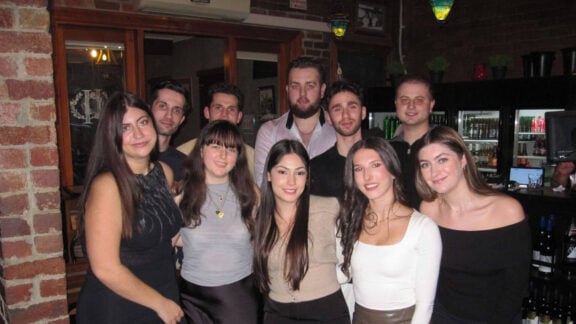Kerkyra’s turbulent history – constant sieges, 400 years of Venetian rule followed by a period of French rule, and then an era of British protection thrown in for good measure – sent Kerkyra to the top of my travel wish list.
If any island was to have an architectural identity crisis, it would be this one. Kerkyra (also known as Corfu) is so supremely different from anywhere else in Greece, it could be its own unique country. UNESCO World Heritage-listed Kerkyra town is a blend of Venetian, French and British architecture, dominated by castles and fortresses. Elsewhere on this Ionian island are verdant hills topped with lush pine trees and cypresses. And then there’s the island’s sport of choice – cricket. Are we still in Greece?
My first few days on the island are spent in Kerkyra Town, an utterly photogenic location. Labyrinthine lanes that were created to confuse the pirates – and now the entranced tourists – are laced with faded Venetian architecture that gives the town a distinctively non-Greek appearance. There is a respectful grace here, once grand and rich, and it has aged beautifully over time like a grand dame.
A day can easily be spent walking Kerkyra Town, taking in a small, yet special collection of sites. The Liston, an arcade created by Napoleon to mimic the grand avenues of Paris, has a noble allure. Back in Napoleon’s day, you had to put your name on a list to reserve a time to walk down its marble esplanade. With no doorman in sight, stop for a frappe at the Liston cafe, and enjoy prime position amongst what must be the best people watching spot in town. Wander down the coastline to the Old Fort, a Venetian fortress where all of Corfu’s citizens lived during medieval times. Sill imposing, it is worth having a look around, but don’t expect any signs to direct you.
The views from the top are commanding, and you can see why this site was selected as a look-out point. Back in town, quaint Saint Spyridon church houses the body of the patron saint of the island. He is revered for extinguishing the plague as well as being the protector of travellers, and so it is fitting for any traveller to say a prayer and pay their respects.
After a few days of civilised exploration of town, it is time to commune with Kerkyra’s natural beauty. Driving around the island is anything but dull, with its undulating green hills, winding roads and heart-stopping heights. On the way to Paleokastritsa, there is plenty to see. Angelokastro is a 13th century Byzantine castle and worth the steep climb up the stone path to this impressive structure. Cliff-top towns, like Lacones, make a great pit stop for refreshing drinks, sweets and panoramic views of the island. Roadside stalls along the way tempt you with local produce, like honey and wine.
Paleokastritsa is renowned as one of Corfu’s best beaches. It’s actually six different beaches, separated by headlands. The vista of the aqua water against the lush green foliage is spectacular. The beach is a cozy size and sandy, sheltered by green hills on both sides. Small (and thankfully quiet) boats carry passengers out from time to time, to the many hidden grottoes in the cliffs around the area. Rather than hop on a boat, we hire kayaks to take us to the grottoes. Kayaking in Paleokastritsa is actually preferable to boating because you are so low to the water, it creates an intimacy with the surroundings. Entering the caves on our own is quite an experience. It is so quiet that all you can hear is the lapping of the water, and its echo.
The light reflects off the water and onto the cave walls, giving it the magical quality of having crossed over into another world. We continue along, discovering one grotto at a time on our own with no guide. The peak is finding ‘The Blue Eye’, a hidden underwater gap in the grotto wall, where the filtered light reveals iridescent schools of fish under the water.
Back on dry land, Paleokastritsa is a charming town of restaurants serving traditional fare and small shops for stocking up on fresh fruit and other supplies. It’s very quiet by way of nightlife, except for a fantastic alfresco bar fittingly called La Grotta, built into the side of a cliff in a sheltered cove. Listening to chilled music a la Cafe Del Mar, you can sip on quality cocktails while seated on huge throw cushions or dive off the diving board that juts out of the rocks. It may not have much nightlife, but Paleokastritsa has one of the most incredible bars I’ve seen in a while.
Sometimes it takes a little bit of nature, and a little bit of nurture, to create something spectacular.
Getting there: Aegean Airlines and Olympic have daily flights from Athens to Corfu during peak season. Staying there: Konstantinoupolis Hotel is reasonably priced, in a historic building in Kerkyra Town, walking distance to the main sites. Astakos Taverna hires out simple beachfront villas in Paleokastritsa.









